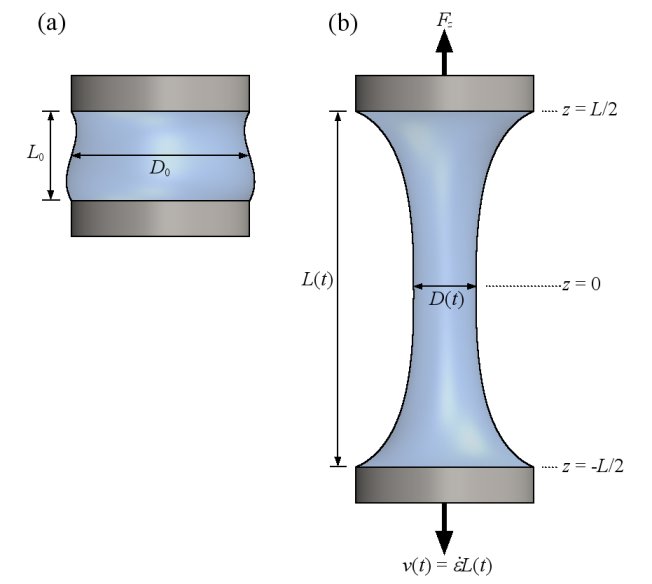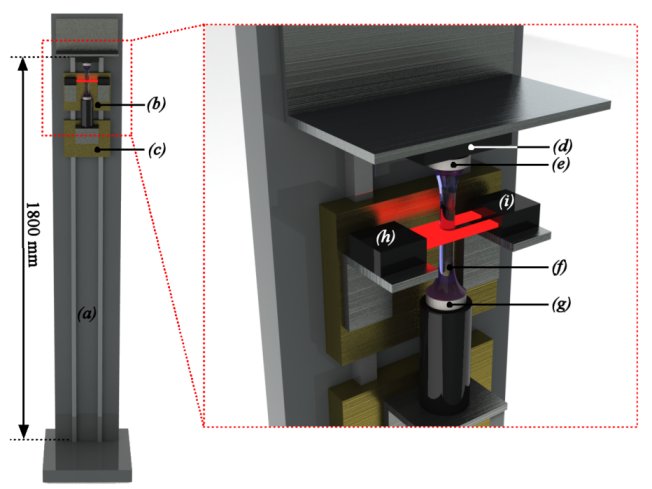Complex
fluids
that contain, for example, flexible long-chain polymers can undergo
orders-of-magnitude increases in apparent extensional viscosity when
they are
stretched as compared to when they undergo shearing deformations. This
is due
to the ability of stretching flows to generate significant alignment
and
orientation of the macromolecules along the flow direction, which
results in
increased segment-solvent frictional interactions. Extensional
viscosity is
widely recognized as a fundamental material function that is necessary
for the
complete characterization of complex fluid samples. However, the
measurement of
extensional viscosity, particularly for dilute or low viscosity fluids,
is one
of the most challenging aspects of rheometry due to the dependence on
both the
extensional strain rate and the Hencky strain accumulated in the fluid.
Some of
the most successful devices developed for measuring extensional
viscosity are
the filament stretching extensional rheometers or (FiSER’s). In these
instruments a quantity of test fluid is loaded between two circular
parallel
plates to form a cylindrical liquid bridge of diameter  and
initial separation
and
initial separation  . The
plates are then separated at an exponentially
increasing rate such that
. The
plates are then separated at an exponentially
increasing rate such that  , thus imposing a constant nominal
extensional strain rate (
, thus imposing a constant nominal
extensional strain rate ( ) on the
fluid. As the fluid filament is stretched measurements
are made of the tensile force,
) on the
fluid. As the fluid filament is stretched measurements
are made of the tensile force,  ,
on one of the endplates and the diameter of the fluid
filament at its mid-point,
,
on one of the endplates and the diameter of the fluid
filament at its mid-point,  . The
instantaneous Hencky strain (
. The
instantaneous Hencky strain ( ) is
found from:
) is
found from:
 ,
(1)
,
(1)
which can be differentiated to obtain the true strain rate at the midpoint of the filament:
 .
(2)
.
(2)
The transient extensional viscosity can be computed according to the expression:
 ,
(3)
,
(3)
where a
small
correction should be made to  to
account for surface
tension and gravitational body forces.
to
account for surface
tension and gravitational body forces.

Figure 1. Sketch of a filament stretching experiment. (a) Initial configuration of endplates and fluid at time t = 0 s. (b) Configuration at an arbitrary time t during the stretch.

Related Publications
VM Entov and E J Hinch, Effect of a spectrum of relaxation times on the capillary thinning of a filament of elastic liquid. Journal of Non-Newtonian Fluid Mechanics, 1997, 72, 31–54.
SL Anna and GH McKinley, Elasto-capillary thinning and breakup of model elastic liquids. Journal of Rheology, 2001, 45, 115-138.